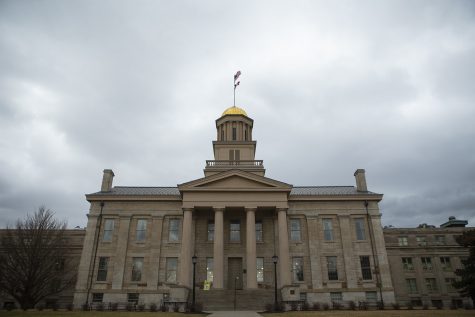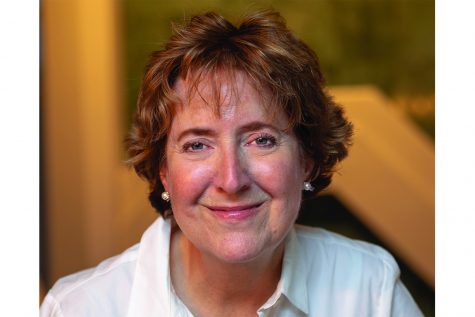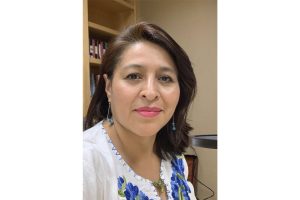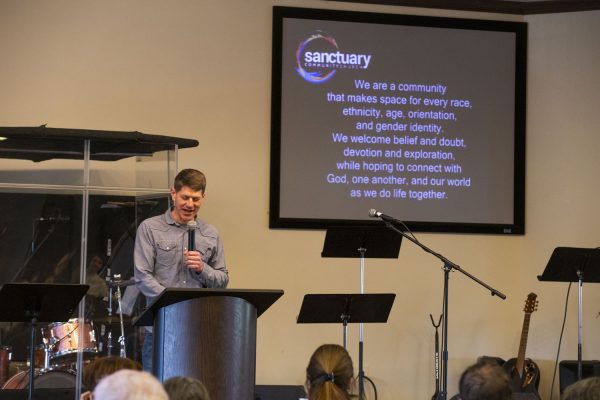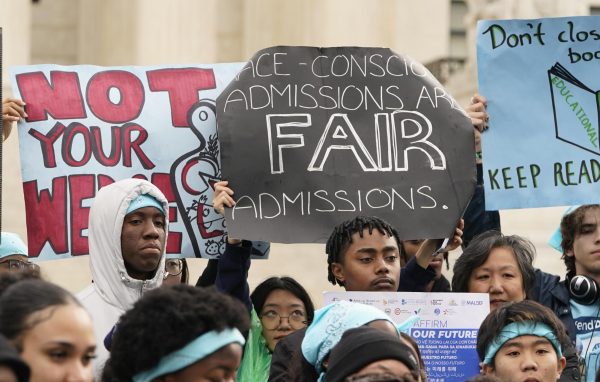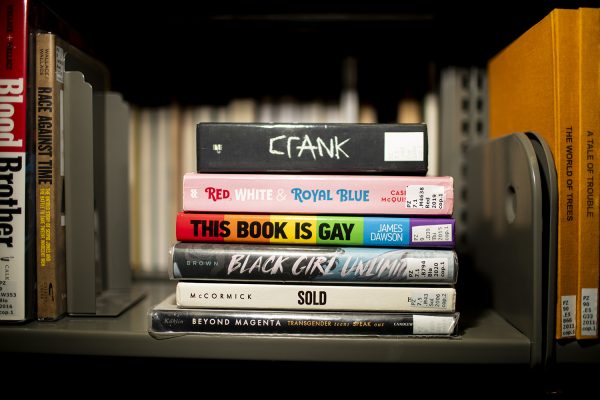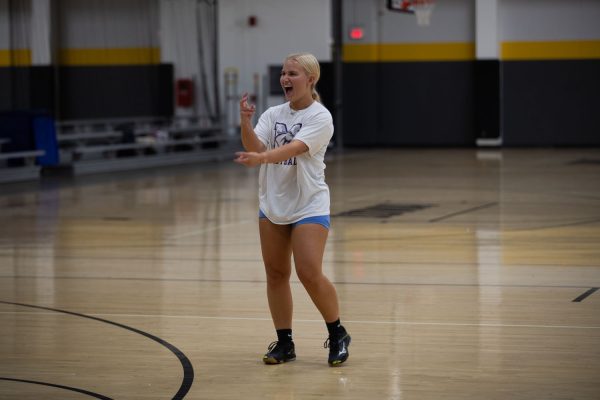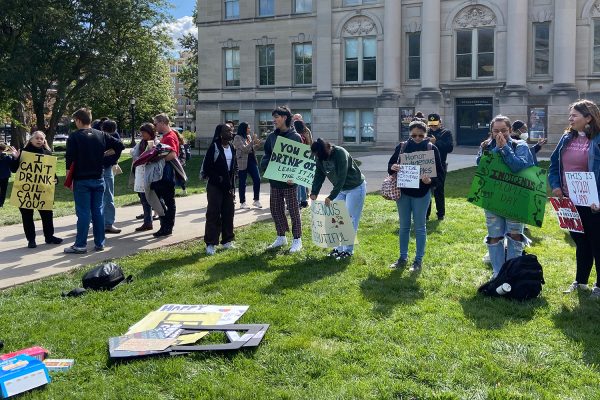Standing Together: Latinx communities voice their support for Black lives
Latinx Heritage Month this year begins at a time of calls for change from people of color after a summer filled with protesting racial injustice. Members of the Latinx community have vocalized their support for the Black Lives Matter movement, as the calls for change continue.
Latinx Heritage Month begins at a time like no other in modern history. Calls for racial justice ring out across the country as Black lives are continuously lost at the hands of law enforcement — and Latinx people are also speaking out.
Regular protests have filled the streets of Iowa City and cities around the world to demand that elected officials reform policing systems after May 25, the day George Floyd was killed by police officers in Minneapolis. For many, Black Lives Matter is not only about fighting injustices within law enforcement, but also in day-to-day experiences.
Eric Vázquez, assistant professor in the University of Iowa American Studies Department and in the Latino/a/x Studies Program said the vast range of community reactions to the Black Lives Matter movement simulate the different reactions throughout American society.
“If you look at some of the imagery that comes out of the BLM protest from across the country, there’s a lot of stuff for Latinos/Latinas, Chicanos/Chicanas for Black Lives Matter,” Vázquez said. “And I think that’s one of the great things about the protest, speaking just personally, is that you do see a lot of solidarity, a lot of different communities — white folks, Black folks, people of color from various stripes, all converging to support the movement.”
While there are some anxious reactions surrounding the cause, Vázquez said, there are also expressions of unity.
The professor noted the Chicano Movement of the 1960s and 1970s among other social-justice campaigns as being influenced by African American pushes for civil rights.
Historically, there’s been continuity in the kinds of oppression Black and Latinx Americans face.
This continuity still exists today, Vázquez said. According to a study on the use of lethal force by law enforcement done by the National Institutes of Health, victims were majority white (52 percent) but disproportionately Black (32 percent) with a fatality rate 2.8 times higher among Black people. Most were reported to be armed (83 percent); however, Black victims were more likely to be unarmed (14.8 percent) than white (9.4 percent) or Hispanic (5.8 percent) victims.
Vásquez said that it’s usually only groups viewed as radical leftist or anti-enforcement, such as Copwatch, that seem to pay close attention to these kinds of police enforcement statistics.
“I think now, Latinos and Latinas are numbered, and Afro-Latinos and Latinas are also,” he said. “So, there’s that overlap in the communities too. I think those two identities … can’t be divorced from the propensity of police to perhaps bring more violence and bring more hostility or more anxiety to encounters with communities of color in general.”
Isabel Ortiz, a UI graduate student, said the Black Lives Matter movement directly connects to Latinx Heritage Month, especially for Afro-Latinos.
“I think when Latinx Heritage Month gets brought up — or people still refer to it as Hispanic Heritage Month — they envision whites, Hispanic, or Latinx people,” she said. “Latinx Heritage Month and Black Lives Matter, they’re not separate; they’re very much involved.”
Ortiz said she hopes the movement and the dialogue it’s creating brings about sustainable change.
“Extremes are coming out, divisiveness is very evident,” Ortiz said. “And so, I hope that we’re seeing each other in a humanistic sense because Black Lives Matter.”
According to a recent report from the American Civil Liberties Union, a Black person in Iowa is 7.3 times more likely to be arrested for marijuana possession than a white person, despite both groups using the drug at similar rates.
UI student Chris Vazquez, a Minneapolis native, lived just 10 minutes from where Floyd was killed. Vazquez said they had a real-time experience watching people of color in their hometown call for change.
Vazquez funded supplies for protests and gathered money for individuals in need as protests continued on this summer.
“I definitely don’t always feel safe,” they said.
According to a study done in 2018 by the World Bank, one in four Latin Americans identify themselves as of African descent. The study also found that Black Latinx people are victims of violence at a higher rate.
“If you Google ‘Latino,’ generally you don’t see Black Latinos, you just see brown-skinned Latinos,” Vazquez said. “I think that’s really interesting — there isn’t really a conversation about it.”
As of July 1, 2018, the Iowa Data Center estimates the Latinx population is 194,432, making people of Hispanic or Latino origin the largest ethnic minority in the Hawkeye State, accounting for 6.2 percent of the population.
In an email to The Daily Iowan, Jorge Guerra, lecturer in the UI Latina/o/x Studies Program said — when discussing solidarity — it’s essential to note Latina/o/x is an umbrella term that represents a multitude of different cultures and beliefs. Those from Latin America may include people with a mix of African, European, and indigenous ancestry.
It’s important to acknowledge perspectives from Latinx supporters, advocates of the Black Lives Matter Movement, and those who object to it, Guerra said. Younger Latinx people who lean progressively tend to be more supportive of the Black Lives Matter movement.
“Latina/o/x millennials and Generation Z Latina/o/x peoples are some of the major voices confronting the racist biases and perceptions of Black/African American people within the Latina/o/x community,” Guerra said.
The Latina/o/x population who do not support the Black Lives Matter movement tend to be older and more traditional with moderate to conservative stances on racial issues, the lecturer added.
“If this group of Latina/o/x peoples are not supportive of Trump’s perspective on BLM, they are sympathetic to the images of cities and small businesses — especially immigrant-owned businesses — burning across their television screens and electronic devices,” Guerra said.
UI student Oscar Rodriguez had always been instructed by his parents to know what to say when confronted by the police or in an uncomfortable situation. For Rodriguez, growing up and learning how to deal with his identity was a cultural norm.
“Growing up in Iowa as a Latinx-identifying guy, I’ve never really felt safe,” he said. “Thinking about Iowa itself with a mostly white population, I’ve never felt safe.”
For Rodriguez, the Black Lives Matter movement caught his eye in 2014 when 18-year-old Michael Brown was fatally shot by a white police officer in Ferguson, Missouri. Since then, Rodriguez has participated in various demostrations and calls for racial justice.
“No matter what I do, no matter who I become, no matter what I study, or whether I graduate with a degree or not — I am always going to be seen as this brown body by the police,” Rodriguez said.
(she/her/hers)
Email: [email protected]
Mary Hartel is a news reporter and digital producer at The Daily Iowan. She is a senior at the University...

(she/her/hers)
Email: [email protected]
Alexandra Skores is the Managing Editor of The Daily Iowan. She is a senior at the University of Iowa...





